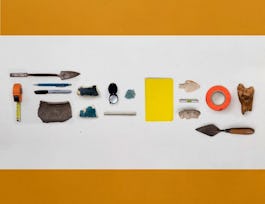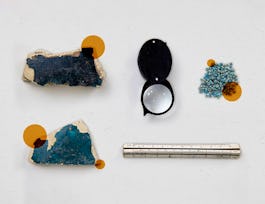This course will help you learn how fossils give us an insight into how the early members of our lineage walked bipedally. The four million years old bone of Australopithecus anamensis is the oldest undisputed evidence for bipedalism in our lineage. Similarly, Lucy’s, who was Australopithecus afarensis, fossil also helped scientists discover a lot about how bipedalism evolved over time. You will also explore bipedal variations in humans. From its earliest version to its modern form—how humans learned to walk, is an interesting story. Similarly how a human being learns to walk, from a toddler’s first footstep to an adult human being’s walk and its variations would also be discussed in this course. You will also understand that while bipedalism has its advantages, it has its adverse effects on humans too from a musculoskeletal point of view.



Experiments and Variations in Bipedalism
Ce cours fait partie de Spécialisation Bipedalism: The Science of Upright Walking

Instructeur : Jeremy DeSilva
Inclus avec 
Détails à connaître

Ajouter à votre profil LinkedIn
7 devoirs
Découvrez comment les employés des entreprises prestigieuses maîtrisent des compétences recherchées

Élaborez votre expertise du sujet
- Apprenez de nouveaux concepts auprès d'experts du secteur
- Acquérez une compréhension de base d'un sujet ou d'un outil
- Développez des compétences professionnelles avec des projets pratiques
- Obtenez un certificat professionnel partageable


Obtenez un certificat professionnel
Ajoutez cette qualification à votre profil LinkedIn ou à votre CV
Partagez-le sur les réseaux sociaux et dans votre évaluation de performance

Il y a 4 modules dans ce cours
This module explores bipedal variations in humans and why different forms of bipedal walking may have evolved.
Inclus
13 vidéos16 lectures1 devoir2 sujets de discussion25 plugins
This module explores the benefits of bipedal locomotion. It also discusses how the early hominin species such as Homo erectus and Homo naledi used to walk.
Inclus
6 vidéos5 lectures1 devoir2 sujets de discussion12 plugins
This module provides an introduction to how children learn to walk and how that varies across cultures. This also talks about the difference between running and walking and the adaptations for running.
Inclus
11 vidéos3 lectures3 devoirs2 sujets de discussion3 plugins
This module explores the downsides of bipedalism and the anatomical trade-offs that result from our evolutionary history of upright walking.
Inclus
11 vidéos7 lectures2 devoirs2 sujets de discussion16 plugins
Instructeur

Offert par
Recommandé si vous êtes intéressé(e) par Basic Science

Rice University

Rice University

Duke University

University of Colorado Boulder
Pour quelles raisons les étudiants sur Coursera nous choisissent-ils pour leur carrière ?





Ouvrez de nouvelles portes avec Coursera Plus
Accès illimité à 10,000+ cours de niveau international, projets pratiques et programmes de certification prêts à l'emploi - tous inclus dans votre abonnement.
Faites progresser votre carrière avec un diplôme en ligne
Obtenez un diplôme auprès d’universités de renommée mondiale - 100 % en ligne
Rejoignez plus de 3 400 entreprises mondiales qui ont choisi Coursera pour les affaires
Améliorez les compétences de vos employés pour exceller dans l’économie numérique
Foire Aux Questions
Access to lectures and assignments depends on your type of enrollment. If you take a course in audit mode, you will be able to see most course materials for free. To access graded assignments and to earn a Certificate, you will need to purchase the Certificate experience, during or after your audit. If you don't see the audit option:
The course may not offer an audit option. You can try a Free Trial instead, or apply for Financial Aid.
The course may offer 'Full Course, No Certificate' instead. This option lets you see all course materials, submit required assessments, and get a final grade. This also means that you will not be able to purchase a Certificate experience.
When you enroll in the course, you get access to all of the courses in the Specialization, and you earn a certificate when you complete the work. Your electronic Certificate will be added to your Accomplishments page - from there, you can print your Certificate or add it to your LinkedIn profile. If you only want to read and view the course content, you can audit the course for free.
If you subscribed, you get a 7-day free trial during which you can cancel at no penalty. After that, we don’t give refunds, but you can cancel your subscription at any time. See our full refund policy.

